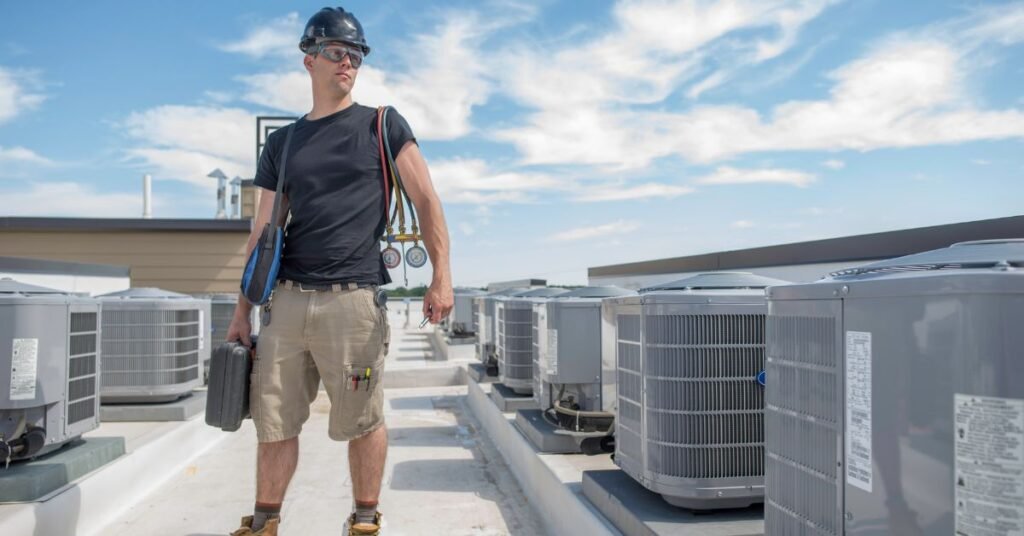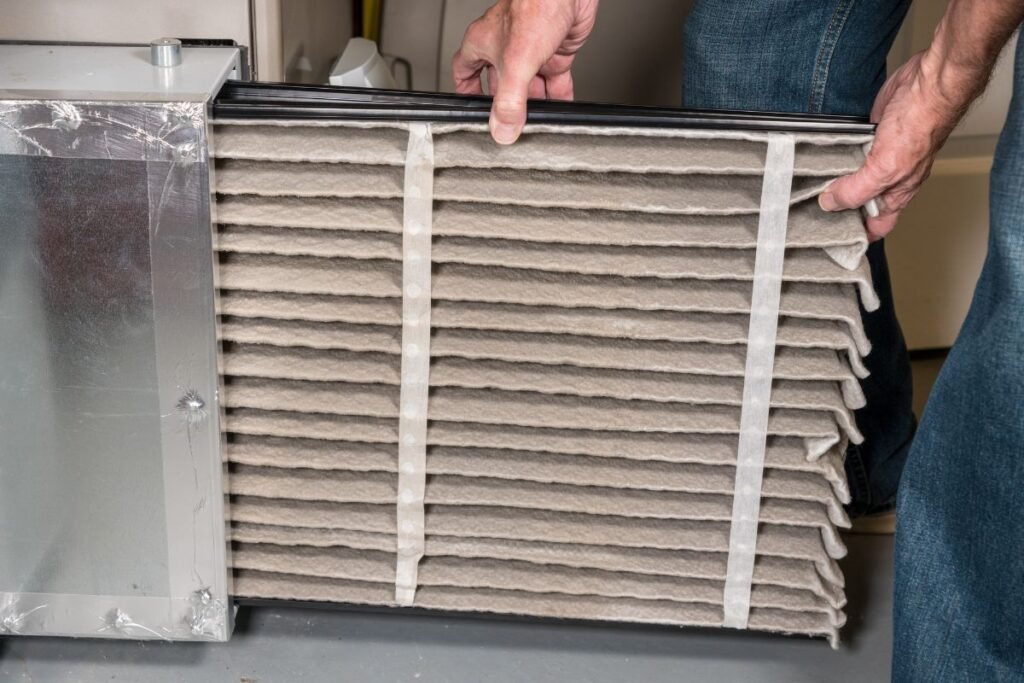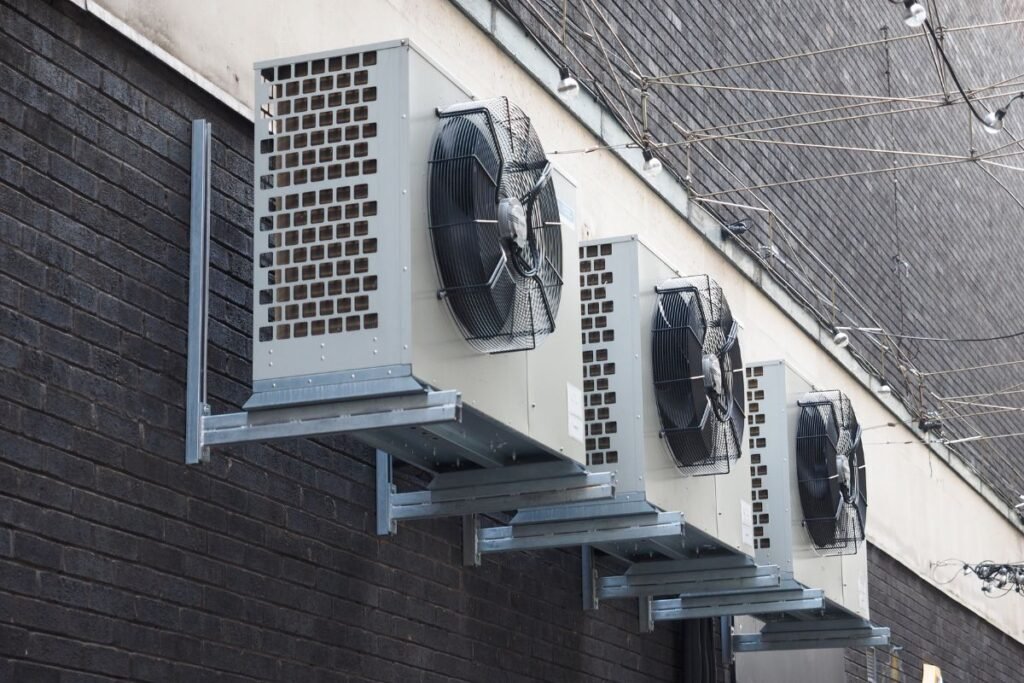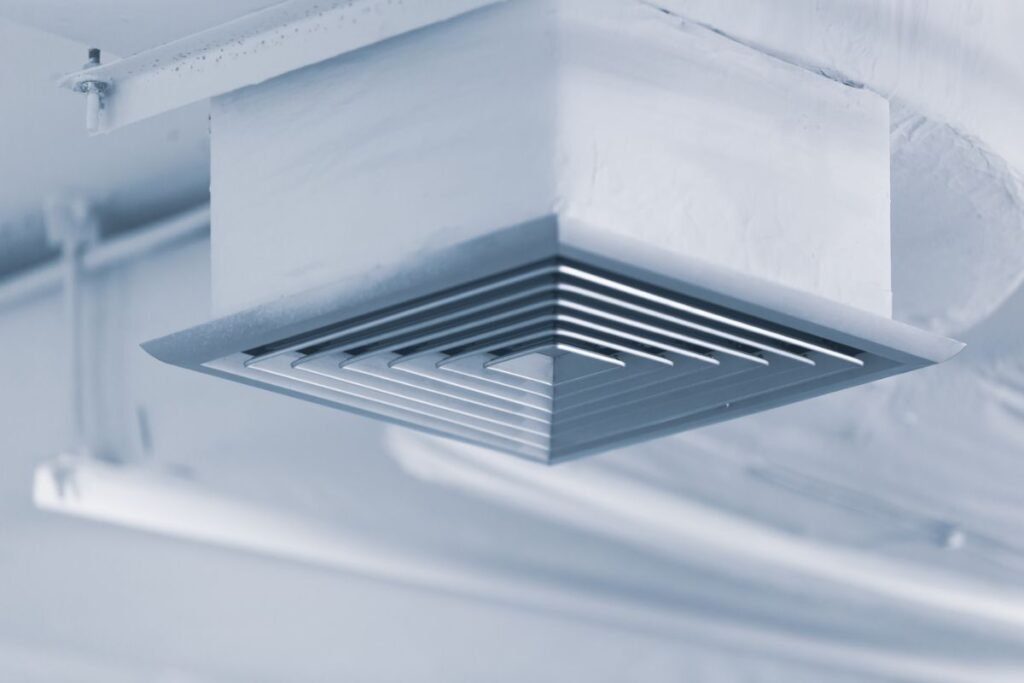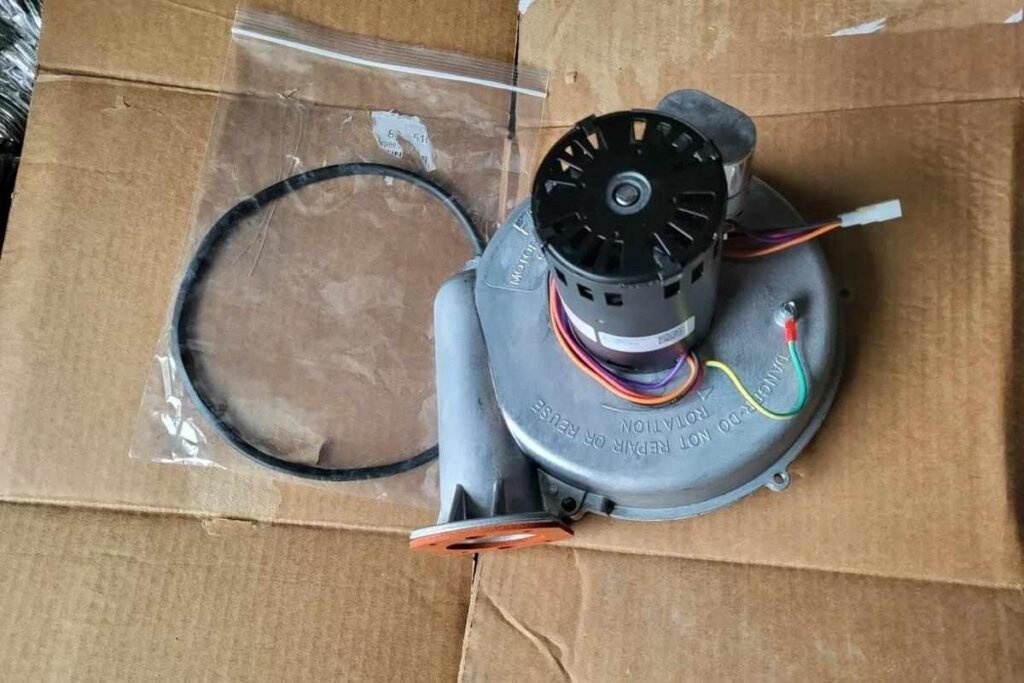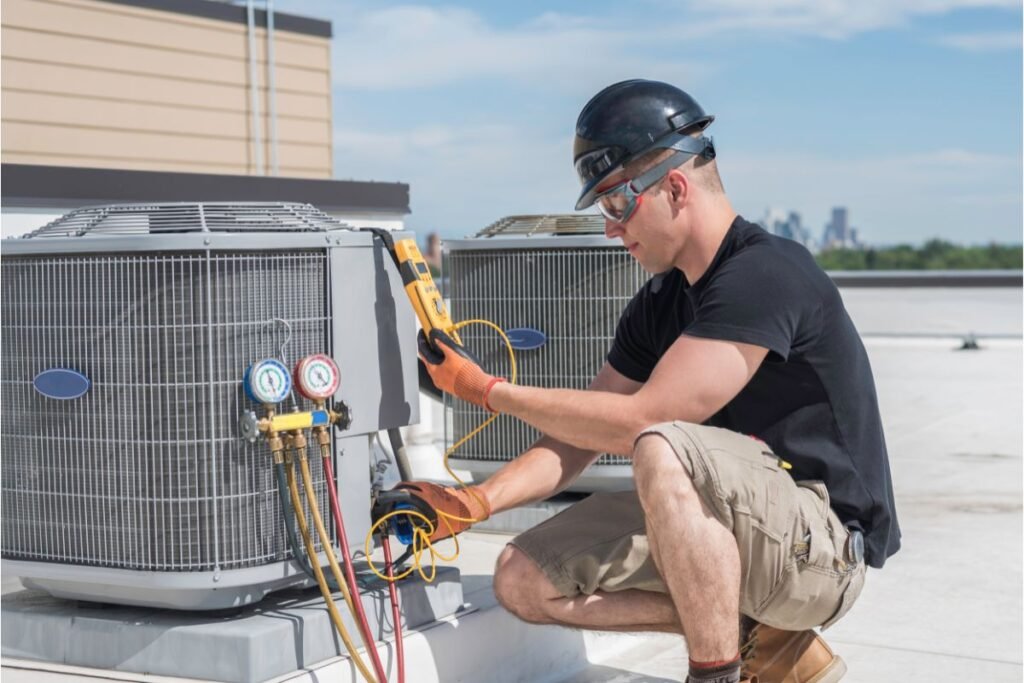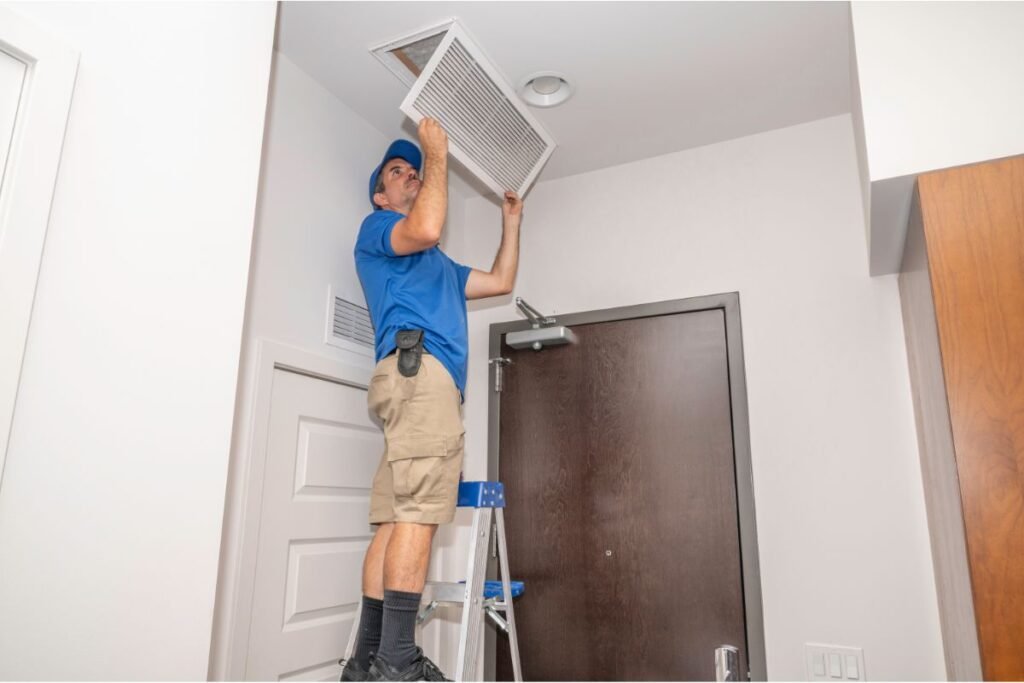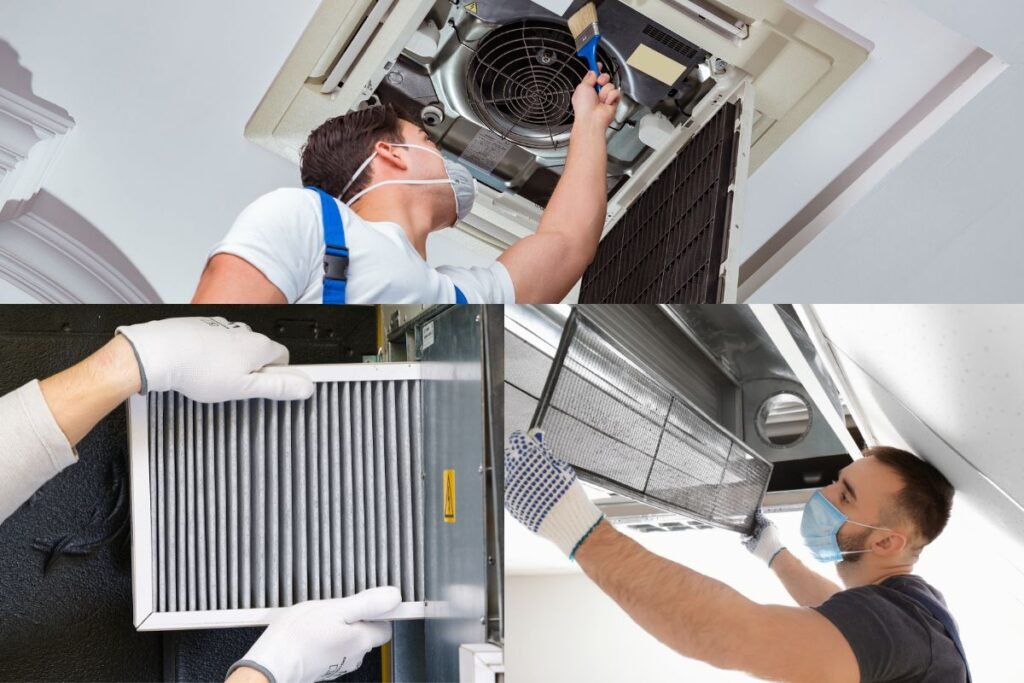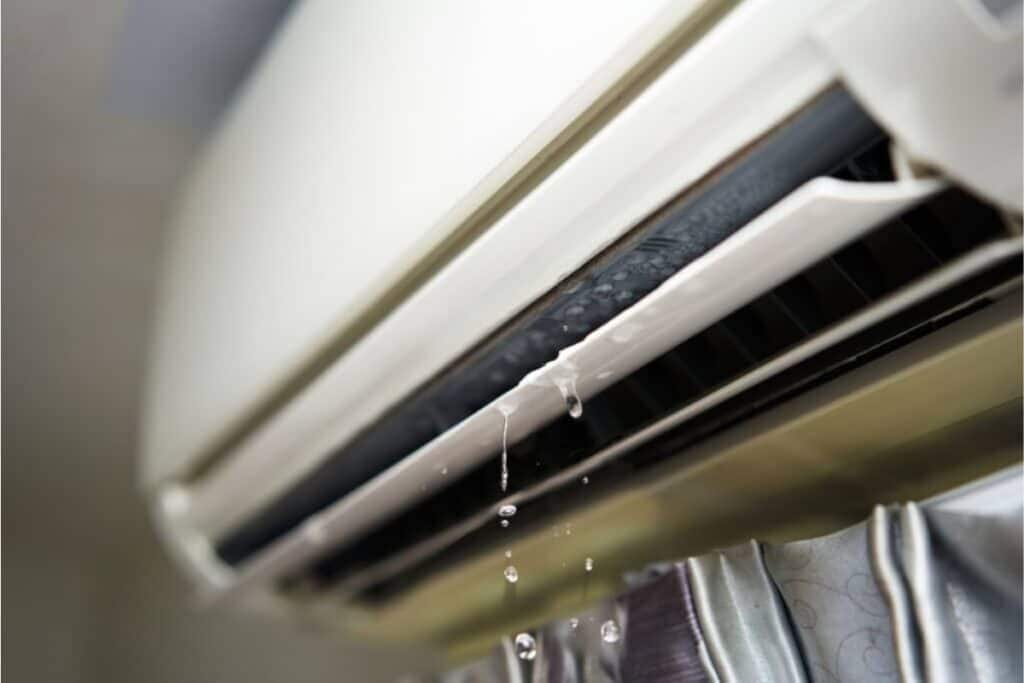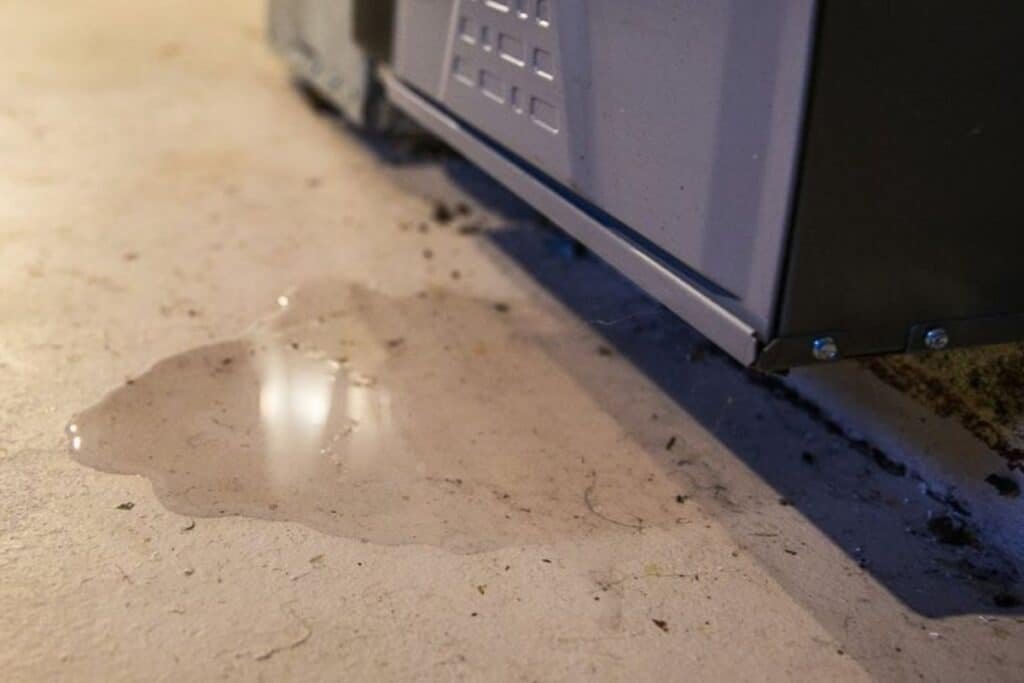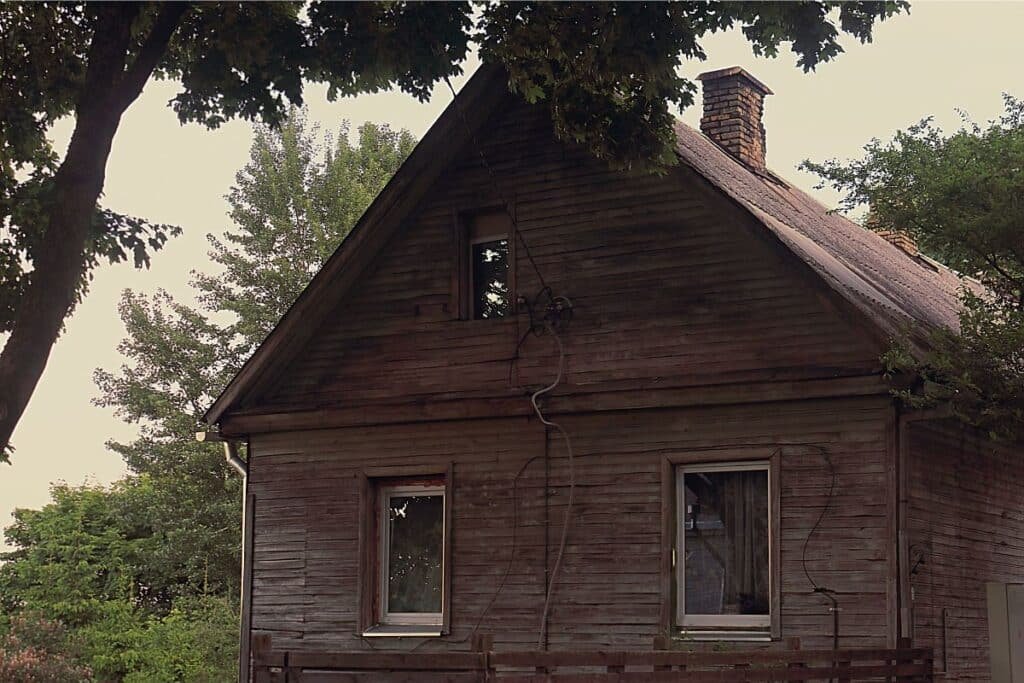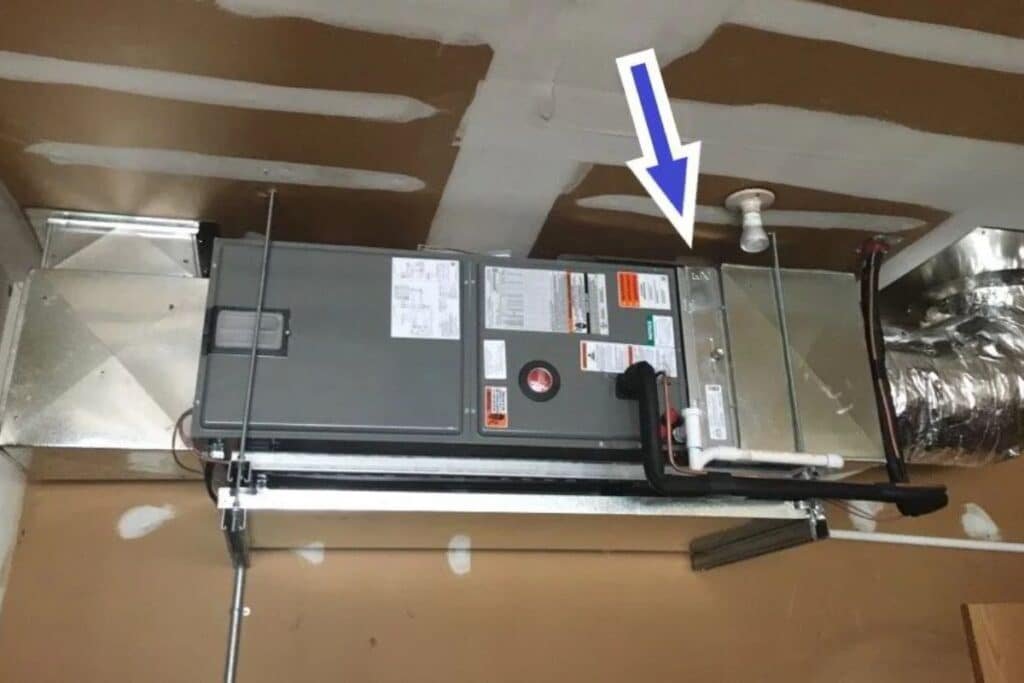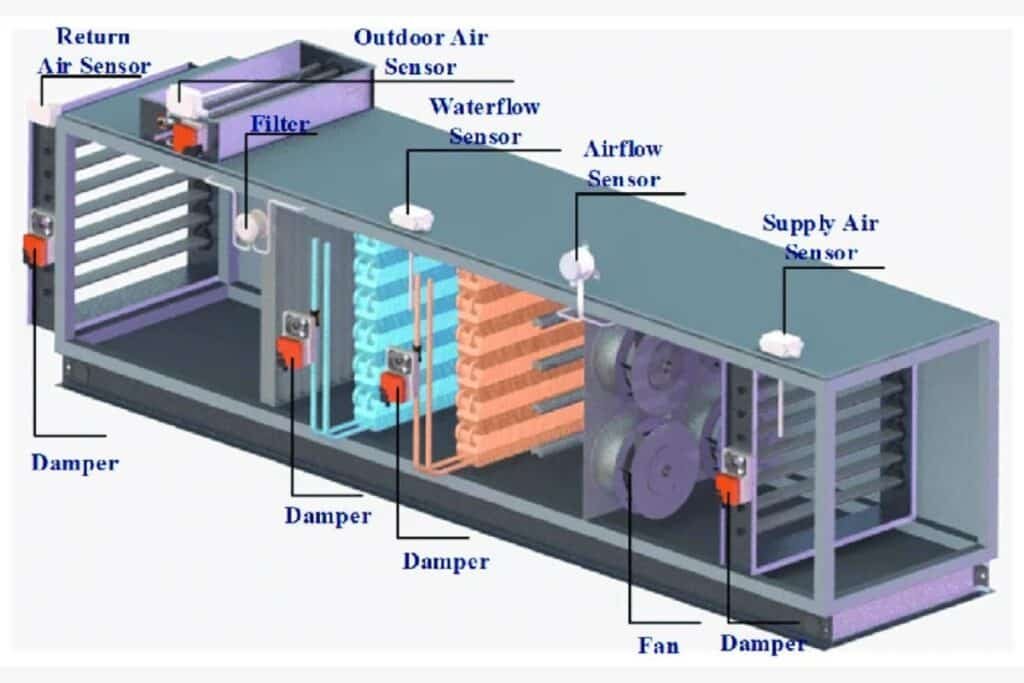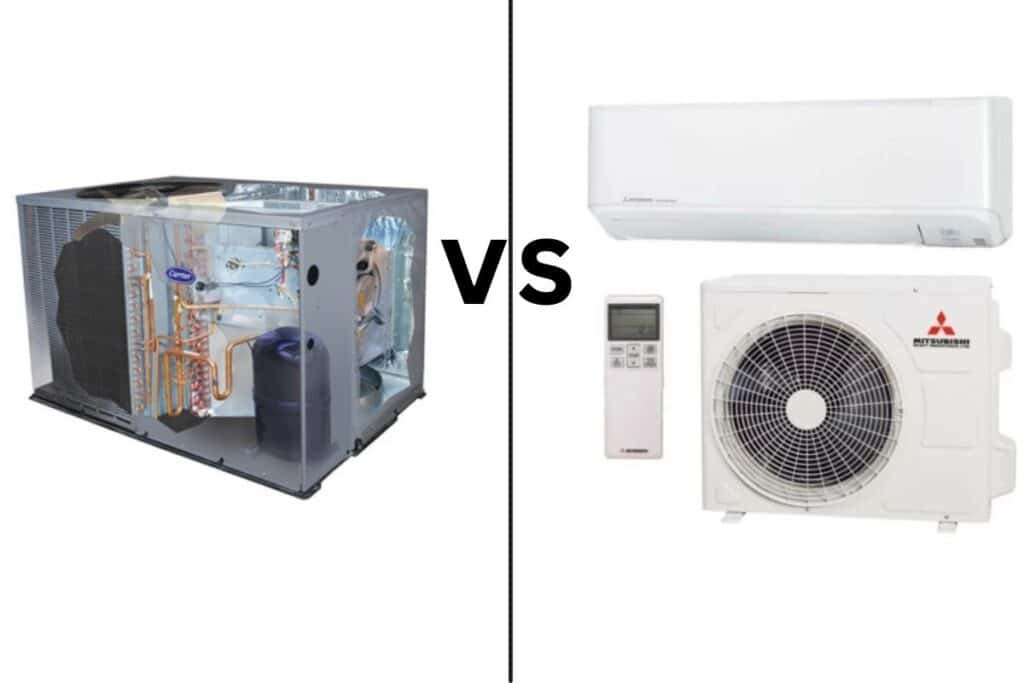The HVAC troubleshooting cheat sheet can be invaluable when your heating or cooling system starts acting up. This comprehensive guide offers a quick reference to help you troubleshoot HVAC issues such as poor airflow, uneven temperatures, or unexpected shutdowns. Whether you’re dealing with a clogged air filter, a faulty thermostat, or considering HVAC repair or HVAC replacement, our HVAC troubleshooting chart will guide you through common problems and solutions. This resource is designed to simplify the process, ensuring your system gets back on track quickly and your home stays comfortable year-round.
Understanding your HVAC System
Before diving into the troubleshooting tips, it’s crucial to have a solid understanding of how your HVAC system works. HVAC, which stands for Heating, Ventilation, and Air Conditioning, is the system responsible for maintaining your home’s indoor comfort by regulating temperature and air quality.
Your HVAC system is composed of several key components working in unison. The thermostat is the control centre, which allows you to set and adjust the desired temperature. The air is heated by the furnace and cooled by the air conditioner. Ductwork serves as the network of pathways that distribute the conditioned air throughout your home. Finally, vents and registers deliver the air into each room, providing the comfort you need.
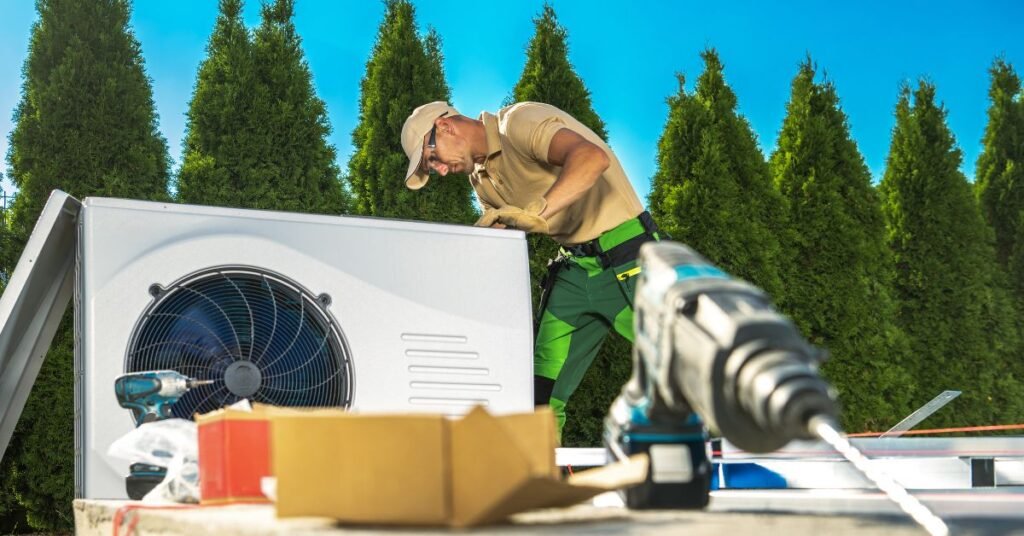
Common Problems and How to Troubleshoot Them Using HVAC Troubleshooting Cheat Sheet
Below, we have compiled a list of some of the most common HVAC problems and how you can troubleshoot them. This guide is your HVAC troubleshooting cheat sheet to help you identify issues before calling a professional.
1. HVAC System Not Turning On
When your HVAC system fails to turn on, it can be frustrating, especially when you need heating or cooling the most. This issue is often linked to common causes such as thermostat malfunctions, tripped circuit breakers, blown fuses, or loose wiring.
Troubleshooting Steps:
- Thermostat: Ensure the thermostat is set to the correct mode (heat or cool) and the temperature is adjusted correctly. Sometimes, simply replacing the batteries can solve the problem.
- Circuit Breaker: Check the circuit breaker to see if it has tripped. If it has, reset it and check if the HVAC system powers up.
- Fuse: Inspect the fuse box for any blown fuses, which could prevent the system from turning on. Replace any blown fuses with the correct type.
- Wiring: Examine the wiring around the HVAC unit for any loose or disconnected wires, as these can interrupt the power flow and stop the system from functioning.
You can often identify and resolve the issue without needing to call a professional by carefully inspecting these components.
2. Inadequate Airflow
Inadequate airflow in your HVAC system can lead to discomfort and inefficiency in heating or cooling your home. A clogged air filter, blocked vents or registers, ductwork leaks, or issues with the fan motor typically cause this problem.
Troubleshooting Steps:
- Air Filter: Start by replacing or cleaning the air filter. A dirty or clogged filter can significantly restrict airflow, making it harder for your HVAC system to maintain the temperature.
- Vents and Registers: Ensure that all vents and registers are open by furniture, rugs, or other objects. Blocked vents can severely limit the airflow in your home.
- Ductwork: Check the ductwork for leaks or holes. Air escaping through leaks can reduce the system’s efficiency and lead to uneven temperature distribution.
- Fan Motor: If the fan motor is not operating correctly, it may need to be repaired or replaced. A faulty fan motor can impede the system’s ability to circulate air which leads to inadequate airflow.
Addressing these potential causes can improve the airflow in your home and ensure your HVAC system operates efficiently.
3. Uneven Heating or Cooling
Uneven heating or cooling is a common issue that can make certain areas of your home uncomfortably warm or cold. This problem can result from poor HVAC installation, incorrect thermostat placement, zoning issues, or ductwork problems.
Troubleshooting Steps:
- Insulation: Check for drafts or areas with poor insulation of your windows and doors. Adding insulation or sealing drafts can help maintain consistent temperatures throughout your home.
- Thermostat Placement: Ensure the thermostat is placed in a central location. I mean, away from direct sunlight, drafts, or heat-producing appliances. A poorly placed thermostat can misread the temperature and cause uneven heating or cooling.
- Zoning: Consider installing a zoning system which allows you to control the temperature in different areas of your home independently. This can be particularly beneficial in larger homes or those with multiple stories.
- Ductwork: Check the ductwork and identify any blockages or leaks. Blocked or leaking ducts can cause uneven air distribution, which leads to temperature inconsistencies between rooms.
Addressing these issues can help you achieve a more comfortable and consistent indoor environment.
4. Strange Noises Coming from the HVAC System
Strange noises from your HVAC system can be unsettling and often indicate something is wrong. Common causes include loose or damaged components, issues with the motor or blower or debris that has entered the system.
Troubleshooting Steps:
- Loose or Damaged Parts: Turn off the HVAC system and inspect it for any loose or damaged components. Tighten or replace any parts that appear to be loose or worn out.
- Motor or Blower Issues: If the noise continues, It may indicate a malfunctioning blower or motor. A grinding or screeching sound often indicates that these parts may need professional repair or replacement.
- Debris: Look for any outdoor material that may have entered the system, such as leaves, twigs, or dirt. Clearing out debris often fixes the noise problem, and more harm can be avoided.
By identifying and addressing the noise source, you can prevent further damage to your HVAC system and ensure it continues running smoothly.
5. HVAC System Constantly Running
An HVAC system that runs continuously can lead to high energy bills and unnecessary wear and tear on the system. Incorrect thermostat settings, a dirty air filter, a refrigerant leak, or a faulty relay switch commonly cause this issue.
Troubleshooting Steps:
- Thermostat Settings: Check the thermostat settings to ensure it is set to “auto” rather than “on.” When set to “auto,” the system will only run when necessary to maintain the desired temperature rather than running constantly.
- Air Filter: Replace the air filter if it is dirty or clogged. A clogged filter can restrict airflow, causing the system to work harder and run longer than necessary.
- Refrigerant Leak: Look for signs of a refrigerant leak, such as ice buildup on the outdoor unit or reduced cooling efficiency. A qualifier should handle these refrigerant issues.
- Relay Switch: Inspect the relay switch for any signs of malfunction. A malfunctioning relay switch may cause the system to stay on when it shouldn’t. If necessary, have the relay switch replaced by a professional.
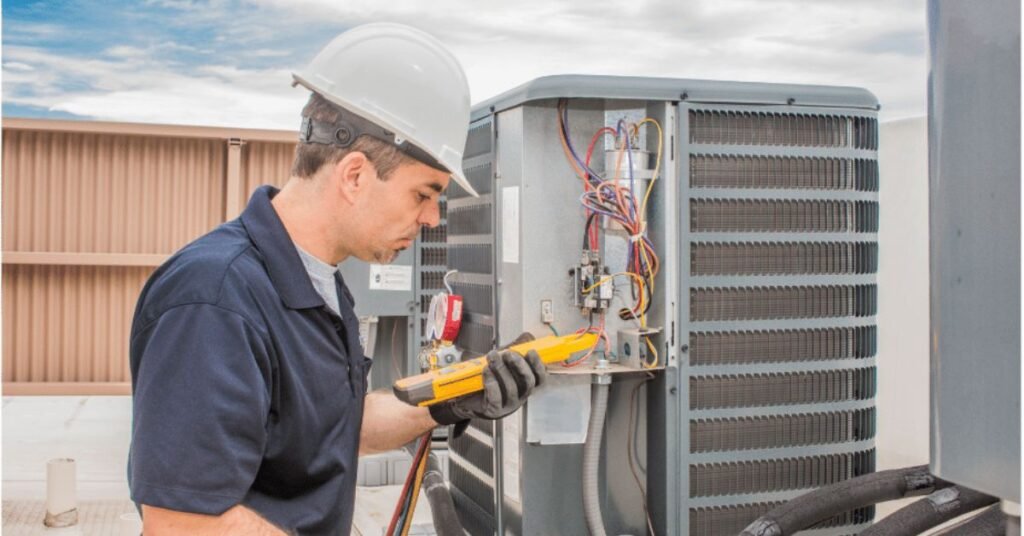
When to Call a Professional
Even though this HVAC troubleshooting cheat sheet is designed to help you solve many common problems on your own, there are situations in which hiring a professional is necessary. Attempting to troubleshoot HVAC problems that require specialised knowledge or tools can lead to further damage, safety hazards, or voided warranties. Here are some situations where calling an expert is the best course of action:
- Refrigerant Leaks: Handling refrigerant is complex and regulated. Refrigerant leaks can affect your system’s efficiency and pose environmental risks. Since dealing with refrigerants requires specialised equipment and certification, it’s crucial to have a professional HVAC technician to address any refrigerant-related issues. If you try to fix it yourself, it may result in improper handling and potential harm.
- Electrical Problems: HVAC systems involve intricate electrical components that only professionals should handle. If you suspect an electrical issue, such as a short circuit, faulty wiring, or a blown capacitor, it’s safest to call a professional. If not properly diagnosed and repaired, electrical problems can lead to shocks, fires, or further damage to your system.
- Major Component Failures: If you face any major component issues like the compressor, condenser, or heat exchanger, then you can call a professional to solve this problem. It is challenging and expensive to fix. These components are vital to the operation of your HVAC system that’s why their failure can lead to a complete system breakdown. It’s best to leave these repairs to a professional who can ensure the job is done correctly because of the complexity.
- Repeated Breakdowns: If your HVAC system experiences frequent issues despite regular maintenance and troubleshooting, it may indicate a more serious underlying problem. A professional technician can thoroughly inspect using an HVAC troubleshooting chart and advanced tools to fix the root cause.
- Strange Odours or Smoke: Unusual odours, such as burning smells or smoke, come from your HVAC system and indicate something is wrong. These could be signs of electrical issues, overheating components, or even mould growth within the system. In such cases, it’s important to shut off the system immediately and contact a professional to prevent potential hazards.
- Water Leaks: While some condensation is normal, excessive water leaks around your HVAC unit could indicate a blocked drain line, a broken condensate pump, or even a refrigerant leak. If a professional does not immediately repair them, these issues can lead to water damage.
- Unexplained High Energy Bills: If you notice a sudden spike in your energy bills without any change in usage, it could be due to an inefficient HVAC system. This inefficiency could stem from issues such as leaking ducts, a failing compressor, or inadequate airflow. A professional can troubleshoot and repair the system to restore efficiency and lower energy costs.
Conclusion
A troubleshooting cheat sheet can be a lifesaver when you want to diagnose and resolve common HVAC problems quickly. This guide has equipped you with common HVAC problems and actionable steps to troubleshoot issues like poor airflow, uneven temperatures, and system malfunctions.HVAC replacement is the best option for both addressing minor repairs and considering HVAC repair. This HVAC troubleshooting guide will help you to take control of your system’s performance.
While many HVAC issues can be tackled with some basic knowledge, it is essential to know when to call a professional. Recognising the limits of DIY troubleshooting can prevent further complications and ensure the safety of your home. By applying the tips in this guide and turning to an expert when necessary, you can keep your HVAC system running efficiently and reliably. Moreover, it will ensure year-round comfort in your home.
HVAC repair involves fixing issues with your heating, ventilation, and air conditioning system. You should consider HVAC repair when you notice problems like inconsistent temperatures, strange noises, poor airflow, or the system isn’t turning on. Regular maintenance can prevent minor issues from becoming major repairs.
HVAC replacement is typically necessary when your system is over 10-15 years old. If it isn’t operating efficiently, it can lead to high energy bills. Upgrading to a new, energy-efficient system can save you money in the long run and provide better comfort in your home.
To find reliable HVAC repair near you, search online for local HVAC companies with good reviews. You can also ask for recommendations from friends or neighbours. Look for licensed and insured technicians who offer transparent pricing and have experience with your specific type of HVAC system.
You can find an HVAC technician near you for regular maintenance through online search engines or ask for referrals from trusted sources. Regular maintenance by a professional ensures your system runs efficiently and can prevent costly breakdowns.
You can ensure that your HVAC system is working properly or not by identifying some issues on your own. This involves checking common problem areas like the thermostat, air filter, circuit breakers, and vents. You can troubleshoot an HVAC system by ensuring the thermostat is set correctly, replacing dirty air filters, resetting tripped breakers, and ensuring vents are open and unobstructed. If the problem continues to arise, then you call a professional.
You can troubleshoot HVAC problems by following some basic steps:
- Start by checking the thermostat settings and If necessary, replace the batteries.
- Inspect the air filter for dirt or clogs, and replace it if needed.
- Check the circuit breaker for any tripped switches.
- Finally, you should ensure all vents are open and clear of obstructions.
Note: If these steps don’t resolve the issue, contact a qualified technician.


